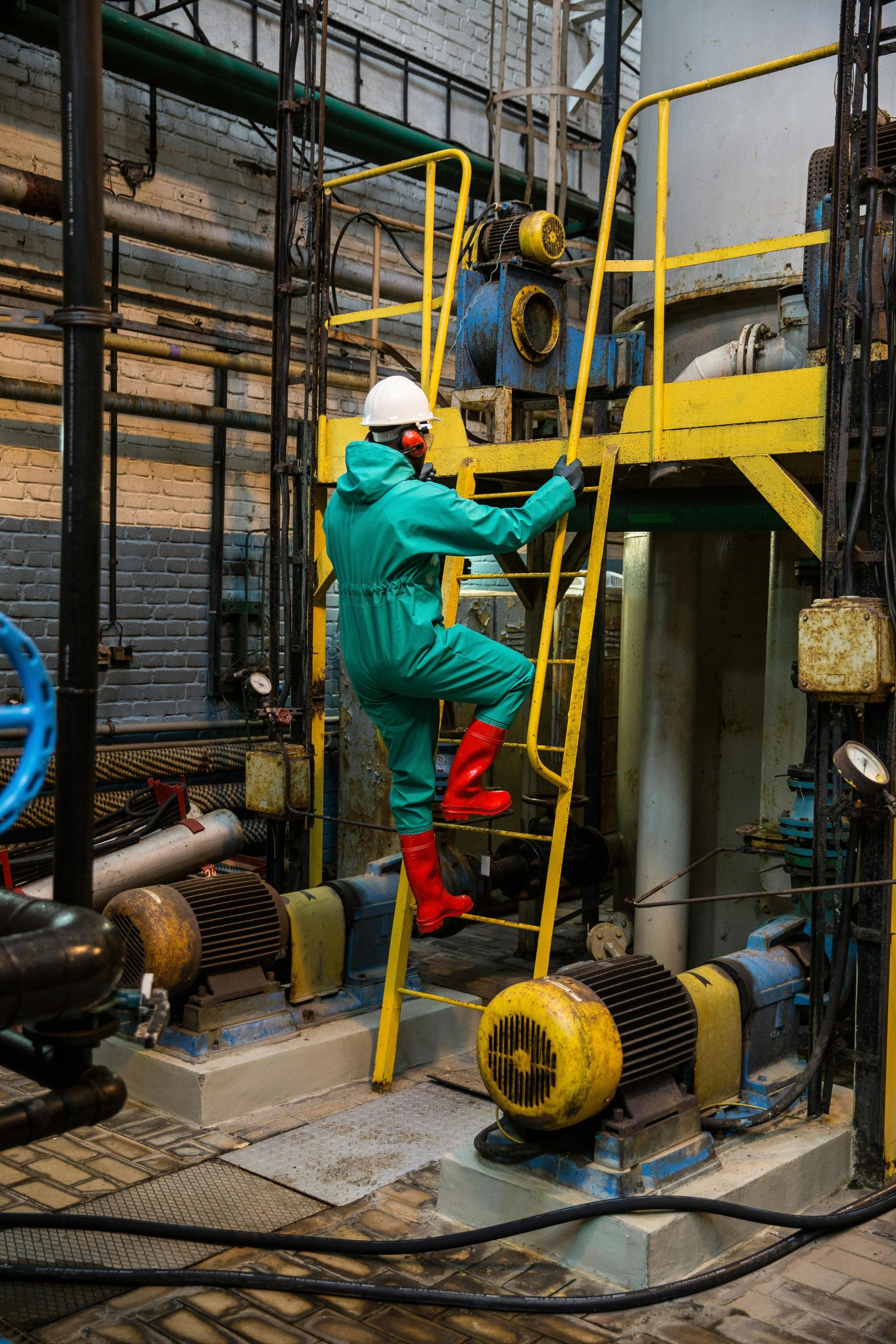Ad Blocker Detected
Our website is made possible by displaying online advertisements to our visitors. Please consider supporting us by disabling your ad blocker.
In this article, you will discover invaluable tips for using a stainless steel pressure cooker to achieve flawless rice and beans every time. Are you tired of spending hours cooking these staples on the stove, only to end up with inconsistent results? With the help of these expert tips, you will learn how to harness the power of a pressure cooker to effortlessly create tender rice and perfectly cooked beans in no time. Get ready to revolutionize your cooking routine and savor the delicious taste of homemade rice and beans like never before.
Choosing the Right Stainless Steel Pressure Cooker
When it comes to choosing a stainless steel pressure cooker, there are a few key factors to consider. First and foremost, you should think about the size and capacity that will best suit your needs. If you often cook for a large family or like to meal prep for the week, a larger pressure cooker will be a better fit. On the other hand, if you primarily cook for one or two people, a smaller capacity cooker may be more suitable.
In addition to size, you should also look for a pressure cooker with a durable and high-quality construction. Stainless steel is known for its durability and resistance to corrosion, making it an excellent choice for a pressure cooker. Make sure to choose a cooker with a thick base and strong handles that will withstand the pressure and heat during cooking.
Safety features are another important consideration. Look for a pressure cooker that has a reliable pressure release valve to prevent excessive pressure build-up. A locking mechanism on the lid is also crucial to ensure that the cooker remains securely closed during cooking. Some pressure cookers also feature additional safety features such as a pressure indicator or a mechanism that prevents the lid from being opened until all the pressure has been released.
Finally, if you have an induction cooktop, make sure that the pressure cooker you choose is compatible. Not all stainless steel pressure cookers are designed to be used on induction cooktops, so it’s crucial to check the specifications before making a purchase. By considering these factors, you can choose the right stainless steel pressure cooker that suits your needs and provides the best cooking experience.
Preparing Rice in a Stainless Steel Pressure Cooker
Cooking rice in a stainless steel pressure cooker is a simple and efficient way to achieve perfectly cooked grains every time. Here are some essential tips to follow when preparing rice in your pressure cooker.
Start by rinsing the rice thoroughly under cold water. This helps to remove any excess starch and prevents the rice from becoming too sticky. Once rinsed, drain the rice well before adding it to the pressure cooker.
Next, it’s important to use the correct rice-to-water ratio. For most types of white rice, a 1:1 ratio of rice to water works well. However, different types of rice may require slightly different ratios, so be sure to check the packaging or recipe for specific instructions.
To enhance the flavor of the rice, consider adding spices and seasonings. Common additions include a pinch of salt, a few cloves of garlic, or a bay leaf. These extra ingredients will infuse the rice with delicious flavors as it cooks under pressure.
Adjusting the cooking time based on the type of rice is crucial for achieving the desired texture. For example, white rice typically requires around 5 minutes of cooking time, while brown rice may need closer to 20 minutes. Refer to the manual that came with your pressure cooker for specific cooking times for different types of rice.
Once the cooking time is complete, it’s important to allow the pressure to release naturally for fluffy rice. This means turning off the heat and allowing the pressure cooker to sit untouched until the pressure indicator drops. Once the pressure has released, carefully open the cooker and fluff the rice with a fork.
By following these steps, you’ll be able to prepare perfectly cooked rice in your stainless steel pressure cooker every time.

Cooking Beans in a Stainless Steel Pressure Cooker
Using a stainless steel pressure cooker to cook beans can save you both time and effort. Here are some tips to help you achieve tender and flavorful beans every time.
Start by soaking the beans overnight. This will help to reduce cooking time and make the beans easier to digest. After soaking, discard the water used for soaking and rinse the beans under cold water to remove any impurities.
To enhance the flavor of the beans, add aromatics and seasonings such as onions, garlic, and herbs. These ingredients will infuse the beans with delicious flavors as they cook under pressure.
Choosing the appropriate cooking time is essential when cooking beans in a pressure cooker. The cooking time will vary depending on the variety of beans you are using. For example, black beans typically require around 25-30 minutes of cooking time, while chickpeas may need closer to 40 minutes. Refer to the manual that came with your pressure cooker for specific cooking times for different types of beans.
Once the cooking time is complete, you can choose between natural pressure release or quick release method. Natural pressure release involves turning off the heat and allowing the pressure to release slowly on its own. This can take anywhere from 10 to 20 minutes. Quick release, on the other hand, involves manually releasing the pressure by turning the pressure release valve. This method is faster but may result in slightly softer beans.
By following these simple tips, you’ll be able to cook perfectly tender and flavorful beans in your stainless steel pressure cooker.
Using the Pressure Cooker’s Manual Pressure Release
The manual pressure release function is a crucial feature of a stainless steel pressure cooker. Here’s what you need to know about using it safely and effectively.
To begin, it’s essential to understand how the manual pressure release function works. When using this function, you manually release the pressure inside the cooker by turning the pressure release valve. This allows the steam to escape quickly, which helps to stop the cooking process and prevent overcooking.
It’s important to follow the manufacturer’s recommended steps for safe pressure release. Different pressure cookers may have slightly different instructions, so always refer to the manual that came with your cooker. Generally, the process involves turning off the heat, moving the pressure release valve to the ‘venting’ position, and allowing the steam to escape until the pressure indicator drops.
When performing a manual pressure release, it’s crucial to use caution to prevent scalding or burns. Always wear heat-resistant gloves or use oven mitts to protect your hands from the hot steam. Ensure that your face and body are a safe distance away from the steam vent to avoid any potential injuries.
Lastly, it’s important to allow the pressure to release completely before opening the cooker. This ensures that all the pressure has been released and it’s safe to open the cooker without any risk of a sudden release of steam.
By understanding and following these guidelines, you can safely and effectively use the manual pressure release function of your stainless steel pressure cooker.

Maintaining and Cleaning your Stainless Steel Pressure Cooker
To ensure the longevity and proper functioning of your stainless steel pressure cooker, regular maintenance and cleaning are essential. Here are some tips to help you maintain and clean your pressure cooker.
After each use, make sure to clean the cooker thoroughly. Start by removing any excess food particles with a wooden or silicone utensil. Then, wash the cooker with warm soapy water using a non-abrasive sponge or cloth. Pay special attention to the seals and gasket, ensuring that no food residue is left behind.
It’s important to remove and clean the seals regularly. Over time, seals can accumulate dirt and food residue, which can affect the performance of the pressure cooker. Remove the seals and wash them with warm soapy water. Rinse them thoroughly and allow them to air dry before reassembling the pressure cooker.
Check the pressure cooker regularly for any damaged or worn-out parts. This includes inspecting the seals, gasket, and pressure release valve. If you notice any cracks, tears, or signs of wear, it’s important to replace the parts promptly. Damaged parts can compromise the safety and functionality of the pressure cooker.
Proper storage is also crucial to avoid damage to your pressure cooker. Make sure to store the pressure cooker in a cool, dry place away from direct sunlight and extreme temperatures. Avoid stacking heavy objects on top of the cooker, as this can cause dents or other damage.
By following these maintenance and cleaning tips, you can ensure that your stainless steel pressure cooker remains in excellent condition for years to come.
Troubleshooting Common Issues with Stainless Steel Pressure Cookers
Sometimes, even with the best practices, issues can arise when using a stainless steel pressure cooker. Here are some common problems and troubleshooting tips to help you overcome them.
Overcooking or undercooking food
If you find that your food is consistently overcooked or undercooked in the pressure cooker, it may be due to incorrect cooking times or improper pressure release. Make sure to follow the recommended cooking times for different types of food and adjust accordingly. Additionally, ensure that you are allowing the pressure to release naturally or using the appropriate release method.
Experiencing leaks or steam release problems
Leaking or steam release problems can occur if the pressure cooker is not properly sealed or if the seals and gasket are worn out. Check that the lid is securely locked in place before cooking and inspect the seals and gasket for any damage. Replace any worn-out parts to ensure a proper seal.
Dealing with food sticking to the bottom
Food sticking to the bottom of the pressure cooker can be frustrating. To prevent this, make sure to add enough cooking liquid and avoid overcrowding the cooker. Using a non-stick cooking spray or a small amount of oil can also help create a barrier between the food and the bottom of the cooker.
Resolving issues with the pressure valve
If you are experiencing issues with the pressure valve, such as it not releasing pressure or not sealing properly, check for any blockages or debris. Clean the valve thoroughly and ensure that it moves freely. If the problem persists, it may be necessary to replace the valve.
Addressing noisy pressure cooker operation
Loud noises during pressure cooking can be disconcerting, but they are often normal. However, if the noise becomes excessive or irregular, it may indicate a problem. Check that the pressure release valve is in the proper position and make sure the pressure cooker is not overfilled. If the problem continues, consult the manufacturer or a professional.
By troubleshooting these common issues, you can make the necessary adjustments and enjoy a smooth cooking experience with your stainless steel pressure cooker.

Safety Tips for Pressure Cooking with Stainless Steel Cookers
Pressure cooking can be a fast and efficient way to prepare meals, but it’s essential to prioritize safety. Here are some safety tips to keep in mind when using a stainless steel pressure cooker.
Read and follow the manufacturer’s instructions
Before using your pressure cooker, carefully read the manufacturer’s instructions. Familiarize yourself with the specific features and functions of your cooker, as well as any safety guidelines or precautions.
Avoid overfilling the pressure cooker
To prevent any potential accidents or spills, avoid overfilling the pressure cooker. Always follow the recommended maximum fill line indicated on the cooker. Overfilling can cause excessive pressure build-up and may lead to leakage or other safety hazards.
Keep the cooker away from flammable materials
During the cooking process, the pressure cooker generates heat and steam. To avoid any fire hazards, make sure to keep the cooker away from flammable materials such as curtains, paper towels, or plastic containers. Also, ensure that the pressure cooker is positioned on a stable surface to prevent accidents.
Use heat-resistant gloves or mitts when handling hot parts
The pressure cooker and its components can become extremely hot during cooking. Always use heat-resistant gloves or mitts when handling hot parts such as the lid or the handles. This will protect your hands from burns or scalds.
Release pressure carefully to prevent accidents
When releasing the pressure from the cooker, do so carefully and according to the recommended method. Avoid pointing the steam vent towards yourself or others, as the steam can cause burns. Open the pressure cooker only after all the pressure has been released and the pressure indicator has dropped.
By following these safety tips, you can confidently use your stainless steel pressure cooker while minimizing the risk of accidents or injuries.
Exploring Flavor Variations for Rice and Beans in Pressure Cookers
While rice and beans are delicious on their own, you can easily elevate their flavors by experimenting with different spices, seasonings, and complementary ingredients. Here are some flavor variations to try in your stainless steel pressure cooker.
Experiment with different spices and seasonings
Spices and seasonings can transform plain rice and beans into flavorful dishes. Try adding spices like cumin, paprika, turmeric, or chili powder to give your rice and beans a Mexican or Indian-inspired twist. Fresh herbs like cilantro, parsley, or basil can also add a burst of freshness.
Add vegetables or meats for additional flavors
Adding vegetables or meats to your rice and beans can create a more satisfying and well-rounded dish. For example, sautéed onions and bell peppers can add sweetness and crunch, while diced tomatoes can provide a tangy flavor. Consider adding cooked chicken, sausage, or shrimp to add protein and depth of flavor.
Try regional or ethnic rice and bean recipes
Expand your culinary horizons by trying regional or ethnic rice and bean recipes. Explore dishes like Spanish paella, Jamaican rice and peas, or Brazilian feijoada. These recipes often incorporate unique flavors and ingredients that can make your rice and beans truly special.
Experiment with cooking liquids for enhanced taste
One way to infuse your rice and beans with additional flavor is to experiment with different cooking liquids. Instead of using plain water, try using vegetable or chicken broth, coconut milk, or even tomato juice. These liquids can add richness and depth to your dish.
By exploring different flavor variations, you can personalize your rice and beans to suit your taste preferences and discover exciting new culinary combinations.

Benefits of Using a Stainless Steel Pressure Cooker for Rice and Beans
Using a stainless steel pressure cooker offers numerous benefits when it comes to cooking rice and beans. Here are some advantages to consider:
Reduced cooking time
One of the main advantages of using a pressure cooker is the significantly reduced cooking time. The pressurized environment inside the cooker allows food to cook at higher temperatures, resulting in faster cooking times compared to traditional stovetop or oven methods. This can be a huge time-saver, especially when preparing meals on busy days.
Energy efficiency
Pressure cookers are known for their energy efficiency. By reducing cooking time, they also reduce the amount of energy required to cook food. This can lead to significant energy savings over time, making the pressure cooker an eco-friendly choice for your kitchen.
Retaining nutrients and flavors
The high-pressure cooking environment of a pressure cooker helps to retain more nutrients and flavors in your rice and beans. Compared to boiling or steaming, pressure cooking helps to minimize nutrient loss, resulting in healthier and more flavorful dishes.
Versatility for preparing various rice and bean dishes
A stainless steel pressure cooker is incredibly versatile and can be used to prepare a wide range of rice and bean dishes. From simple steamed rice to complex bean stews, the pressure cooker can handle it all. With the right cooking times and ingredients, you can create delicious and diverse meals with ease.
By using a stainless steel pressure cooker for cooking rice and beans, you can enjoy the benefits of reduced cooking time, energy efficiency, and enhanced flavors while maintaining the nutritional value of your meals.
Exploring Other Dishes to Prepare in a Stainless Steel Pressure Cooker
In addition to cooking rice and beans, a stainless steel pressure cooker can be used to prepare a variety of other dishes. Here are some ideas to inspire your culinary adventures:
Soups and stews
The high-pressure environment of a pressure cooker is perfect for making flavorful soups and stews. From hearty vegetable soups to comforting beef stews, the pressure cooker can transform simple ingredients into rich and satisfying one-pot meals.
Meat and poultry dishes
Tenderizing tough cuts of meat or cooking whole poultry can be a time-consuming process. However, a pressure cooker can significantly reduce cooking times while still delivering tender and flavorful results. Try making fall-off-the-bone ribs, juicy chicken thighs, or a comforting pot roast in your pressure cooker.
Vegetarian and vegan meals
For those following a vegetarian or vegan lifestyle, a pressure cooker can be a fantastic tool for creating delicious and nutritious meals. From lentil curries to vegetable risottos, the pressure cooker can help you prepare meals that are satisfying and full of flavor.
Desserts and sweet treats
Yes, you can even make desserts in your stainless steel pressure cooker! From decadent cheesecakes to moist chocolate cakes, the pressure cooker can help you create delicious treats that are sure to impress. Don’t forget to experiment with flavoured custards, bread puddings or fruit compotes for a quick and tasty dessert option.
With a stainless steel pressure cooker, the possibilities are endless. Explore new recipes and cooking techniques to make the most of this versatile kitchen tool.


